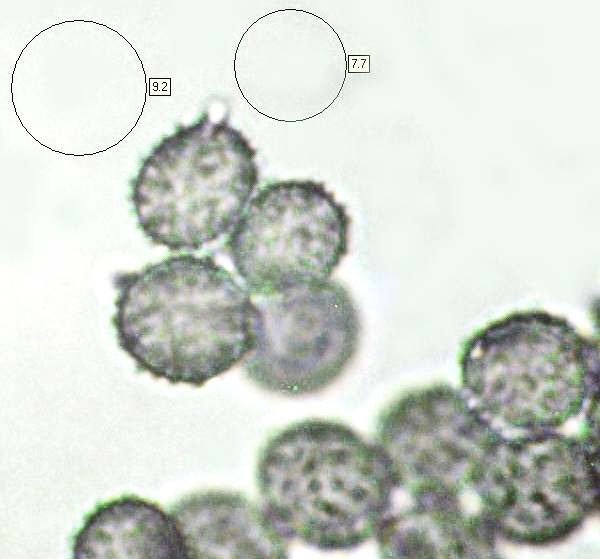Russula gracillima Jul. Schäff. - Slender Brittlegill
Phylum: Basidiomycota - Class: Agaricomycetes - Order: Russulales - Family: Russulaceae
Distribution - Taxonomic History- Etymology - Identification - Culinary Notes - Reference Sources
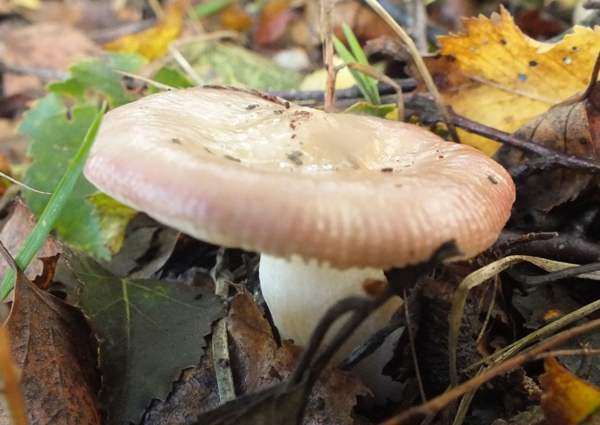
Russula gracillima is an occasional find under broadleaf trees in wet woodland; it is mainly associated with birches. This attractive brittlegill is a delight when you come across it in perfect condition, but being very brittle the caps are easily damaged by falling twigs or passing wildlife.
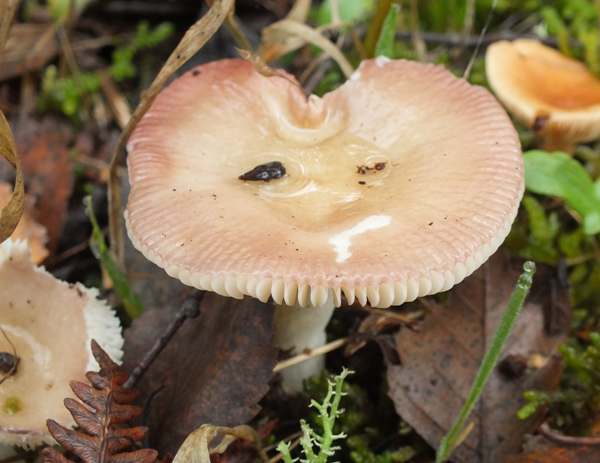
Distribution
An infrequent find in Britain and Ireland, the Slender Brittlegill occurs also on mainland Europe and in some parts of Asia.
Taxonomic history
When German mycologist Julius Schäffer (1882 - 1944) described this brittlegill in 1931 he gave it the binomial scientific name Russula gracillima; this is still the generally-accepted scentific name.
A very similar brittlegill is found in North America and has the scientific name Russula gracilis Burlingham. American mycologist Gertrude Simmons Burlingham (1872–1952) described this species in 1915, and if DNA sequencing shows it to be the same species as Russula gracillima Jul. Schäff., then the name of the European species would have to change to Russula gracillis, as the earlier description takes precedence. (Incidentally, it was Gertrude Burlingham who pioneered the use of microscopic spore features and iodine (Melzer's reagent) staining to help in the difficult task of identifying Russula and Lactarius fungi to species level.)
Etymology
Russula, the generic name, means red or reddish, and indeed many of the brittlegills have red caps (but many more are not, and some of those that are usually red can also occur in other colours!). The specific epithet gracillima comes from the Latin adjective gracillis meaning slender or slim.
Identification guide
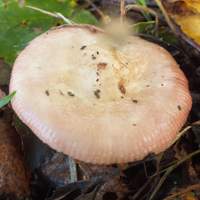 |
Cap2 to 5cm in diameter, the fragile caps soon flatten and often with slightly depressed centres but retailing a downturned margin. The silky smooth cap is slightly viscid when wet; its cuticle peels to between 1/2 and 3/4 to the centre. Mature specimens often develop a furrowed and somewhat lumpy margin. (The technical term for a furrowed margin is ''sulcate'.) Cap colour varies from pale violet through rose or flesh coloured to salmon pink, with pale greenish or olivaceous (occasionally dark grey) tinges in the central region. As with many of the reddish brittlegills much of the cap colour may be washed off in prolonged wet weather. The flesh of this brittlegill turns yellowish-pink with FeSO4 (iron salts). |
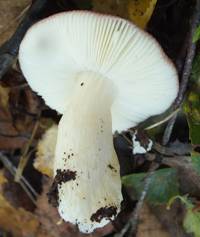 |
GillsAdnexed, broad and moderately spaced, the gills are pale cream, brittle and very fragile. StemCylindrical but usually narrowing towards the apex and occasionally with a slightly clavate base; slender, 3 to 7cm tall (taller than the cap diameter, hence the common name), the brittle stems are white often flushed slightly with pale pink, becoming greyer with age. There is no stem ring. |
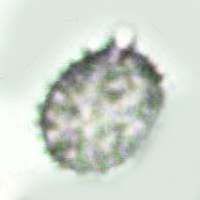 |
SporesOvoid; 7-8.5 x 5-6.5µm; ornamented with isolated warts (not joined by ridges) up to 1 µm tall. Spore printPale to mid cream. |
Odour/taste |
No distinctive odour; slightly to very hot taste. |
Habitat & Ecological role |
In damp broadleaf woodland, often with birches. In common with other members of the Russulaceae, Russula gracillima is an ectomycorrhizal mushroom. |
Season |
July to October in Britain and Ireland. |
Similar species |
Russula rosea is a bright pink brittlegill with a much larger cap; it grown with broadleaf trees but also occasionally with conifers. Russula fragilis is similar but produces a white spore print; its flesh tastes extremely hot. |
Culinary Notes
The Slender Brittlegill is not reported to be a good edible mushroom and so should be treated with caution. In any case it is unusual to find sufficient in one location to justify collecting them.
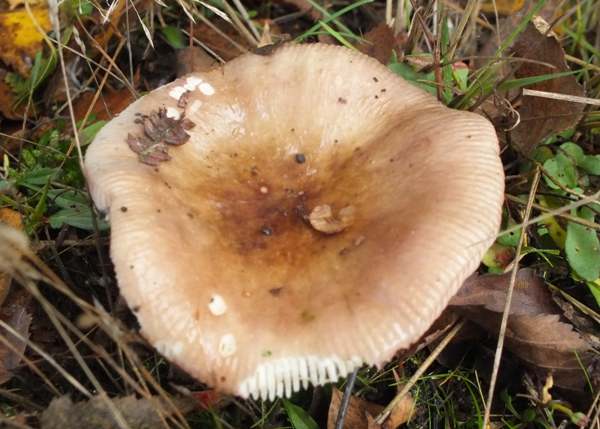
Reference Sources
Pat O'Reilly (2016). Fascinated by Fungi, First Nature Publishing
Geoffrey Kibby (2011).The Genus Russula in Great Britain, published by G Kibby.
Roberto Galli (1996). Le Russule. Edinatura, Milan.
Paul M. Kirk, Paul F. Cannon, David W. Minter and J. A. Stalpers. (2008). Dictionary of the Fungi; CABI.
Taxonomic history and synonym information on these pages is drawn from many sources but in particular from the British Mycological Society's GB Checklist of Fungi.
Fascinated by Fungi. Back by popular demand, Pat O'Reilly's best-selling 450-page hardback book is available now. The latest second edition was republished with a sparkling new cover design in September 2022 by Coch-y-Bonddu Books. Full details and copies are available from the publisher's online bookshop...
